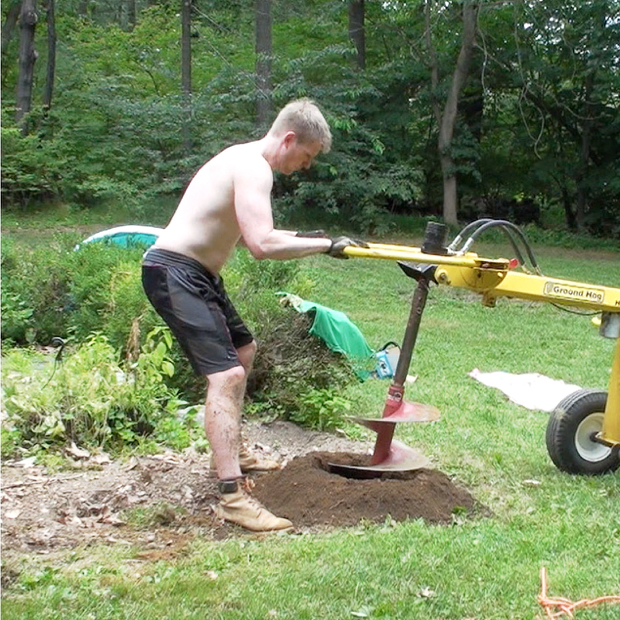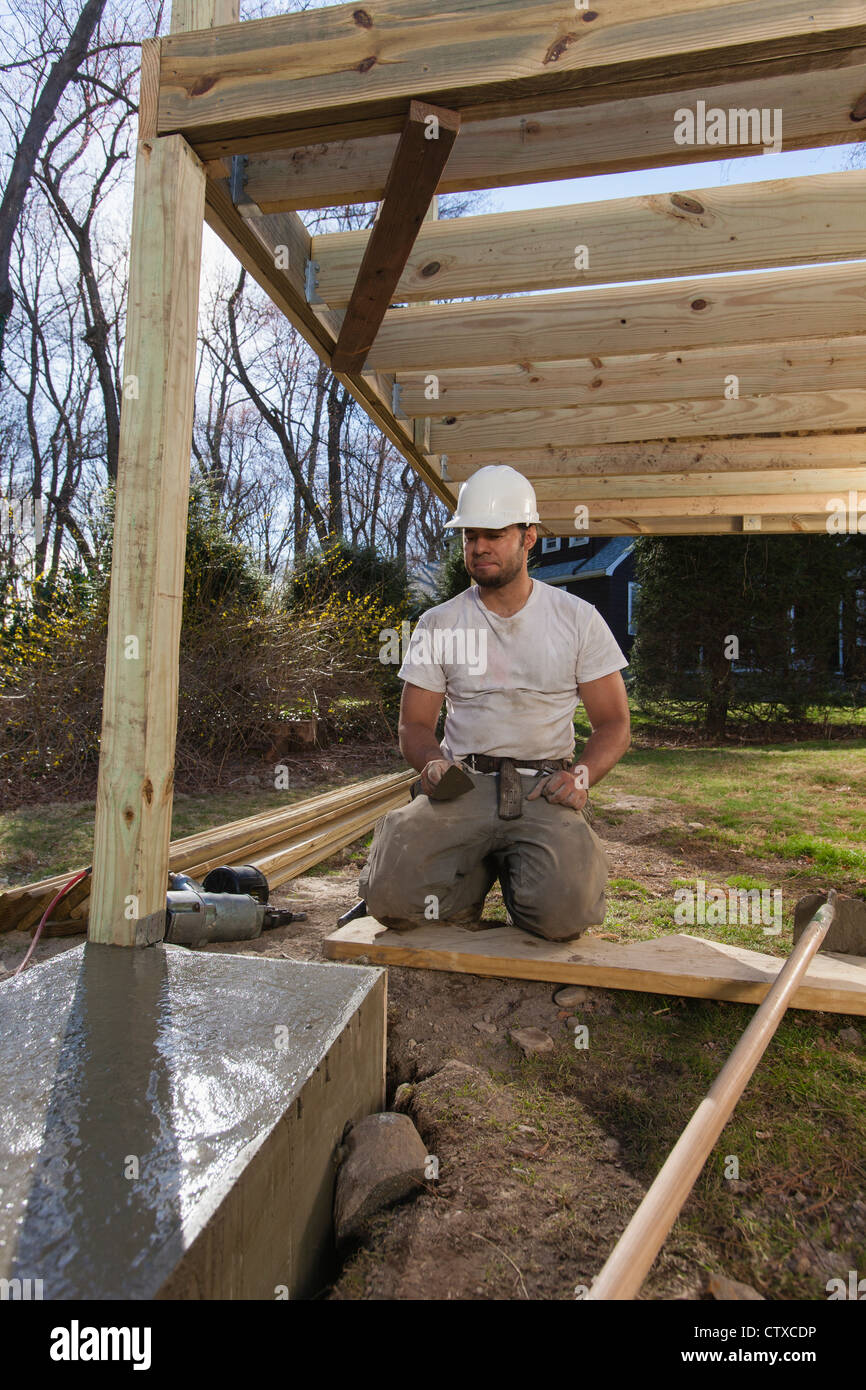Building from the Ground Up: The Ultimate Overview to Designing and Putting Up Deck Footings
Selecting the Right Deck Footings for Security and Resilience
When it concerns constructing a deck, among one of the most essential decisions you will certainly make is picking the right grounds for stability and durability. The longevity and safety of your deck depend greatly on the sort of footings you choose, as they offer the crucial assistance and security to stand up to the examination of time. With a myriad of alternatives readily available, it can be overwhelming to determine which footings are best suited for your details demands. In this discussion, we will certainly check out the different kinds of deck grounds, take into consideration the important variables to weigh when making a choice, and look into the advantages and disadvantages of various alternatives. By the end, you will certainly have a more clear understanding of the options available and be much better equipped to make an educated decision for your deck task.
Sorts Of Deck Footings
There are numerous kinds of deck footings that can be utilized, each offering one-of-a-kind advantages and considerations. One usual kind of footing is the concrete pier footing. These footings contain a round hole loaded with concrete, which gives a solid structure for the deck posts. Concrete pier footings are fairly very easy to set up and offer superb stability, making them a popular selection for several deck tasks.
These footings are installed by screwing them right into the ground, which develops a safe foundation for the deck. They also enable for easy change and progressing of the deck if required.
Additionally, some builders decide for precast concrete grounds. These footings are constructed from resilient concrete and come in different forms and sizes to accommodate different deck styles. Precast concrete grounds are convenient to set up and give a stable base for the deck framework.
Finally, another alternative is the post-in-anchor footing system. This sort of footing entails driving a metal anchor into the ground and connecting it to the deck post. It supplies flexibility in terms of placing the deck blog posts and is suitable for decks with light-weight frameworks.
When choosing the right kind of deck ground, it is vital to take into consideration aspects such as soil conditions, deck load, and local building regulations (Deck Footings). Consulting with a professional service provider or architectural engineer can aid make sure the proper footing is selected for a secure and secure deck
Factors to Think About When Picking Grounds
When picking the proper grounds for a deck, it is vital to meticulously take into consideration numerous elements such as soil problems, deck tons, and adherence to neighborhood building regulations. These aspects play a considerable role in ensuring the security and durability of the deck framework.
The kind of dirt on which the deck will be built identifies the type of grounds needed. On the various other hand, decks constructed on clay or large dirts might need grounds that can suit the dirt's tendency to increase and agreement.
An additional crucial aspect is the deck load. The weight of the deck, consisting of the products used and any kind of possible real-time lots such as furniture or events, need to be thought about when selecting grounds. The footings need to be made to bear the weight of the deck and disperse it equally to prevent any kind of architectural issues or failures.
Last but not least, adherence to local building codes is paramount. Building regulations differ from this link region to area, and it is important to abide by the specific needs established by the neighborhood authorities. Deck Footings. These codes guarantee that the deck is constructed securely and meets the essential standards for architectural stability and load-bearing capacity
Concrete Grounds: Cons and pros

Concrete footings use several advantages and drawbacks when made use of as the foundation for a deck. On the positive side, concrete grounds offer exceptional stability and longevity.
One more benefit of concrete grounds is their versatility. They can be poured right into various sizes and shapes to fit various deck styles and configurations. Concrete grounds can be tailored to fit the details demands and demands of the deck framework.
Nevertheless, there are also some drawbacks to utilizing concrete footings. One major drawback is the cost and labor included in their setup. Concrete grounds need excavation and frequently require the help of heavy equipment. This can raise the overall expense of the deck job and may need expert support.

Helical Piers Vs. Sonotubes: Which Is Much better?
In thinking about the structure options for a deck, the contrast in between helical piers and sonotubes is essential in identifying the exceptional selection. They are turned into the ground using hydraulic equipment, providing a secure and long lasting foundation for the deck.
When it comes to security and toughness, helical piers have the top hand. The helical plates on the piers create a solid hold with the soil, stopping any type of movement or changing of the deck. This is especially advantageous in locations with unstable or changing soil conditions. Sonotubes, on the various other hand, rely only on the concrete filling up for stability, which might not provide the very same degree of strength and resistance.
In terms of setup, helical piers are relatively less complicated and faster to install contrasted to sonotubes. The hydraulic machinery utilized to turn the piers into the ground makes sure a reliable and fast process. Sonotubes, on the various other hand, call for digging holes and putting concrete, which can be time-consuming and labor-intensive.
Furthermore, helical piers are a more functional option. They can be made use of in numerous soil conditions and can be changed or enhanced if needed. Sonotubes, on the various other hand, might require extra support, such as rebar, in particular dirt problems or areas with high load demands.
Choosing the Right Footings for Your Deck's Measurements
For optimal structural integrity, it is crucial to thoroughly choose the ideal grounds that align with the dimensions of your deck. The dimensions of your deck, including its length, height, and width, play a substantial role in identifying the kind and dimension of grounds called for.
When picking footings for your deck, it is essential to think about the load-bearing capability of the soil. The weight of the deck, integrated with the weight of any type of furniture or people on it, exerts a significant force on the grounds (Deck Footings). It is vital to choose grounds that can sufficiently support this weight without shifting or sinking over time.
The size and shape of the grounds must also be taken into consideration. Larger decks with better measurements call for larger grounds to give adequate security and assistance. important source The form of the grounds, whether they are square or rounded, depends upon the design and format of the deck. Furthermore, the depth at which the grounds are set up should be determined based upon the frost line in your region to avoid any type see here now of heaving or shifting as a result of freezing temperature levels.
Verdict
In verdict, choosing the best deck footings is critical for making sure security and resilience. Elements such as the type of footings, the deck's dimensions, and the pros and cons of different options need to be thought about.
These grounds are composed of a round opening loaded with concrete, which provides a solid foundation for the deck messages. Concrete pier footings are fairly simple to mount and supply superb stability, making them a prominent option for lots of deck jobs.
Precast concrete footings are practical to set up and supply a secure base for the deck framework.
It uses flexibility in terms of positioning the deck messages and is ideal for decks with light-weight structures.
Concrete grounds offer several benefits and downsides when made use of as the structure for a deck.